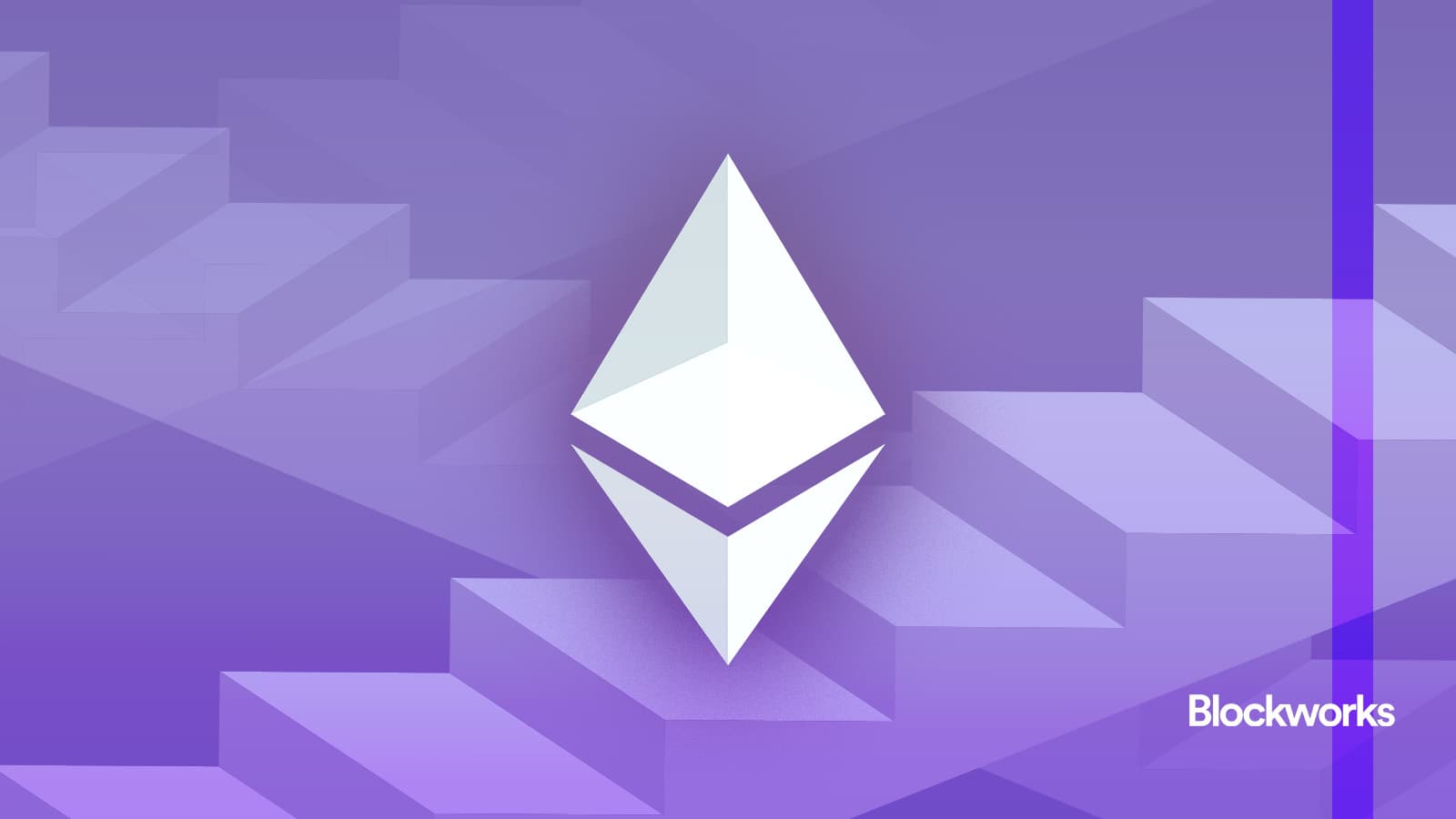Ethereum’s paradox: Usage at all-time highs as fees plummet
As the network gets more efficient, cheaper blockspace keeps revenue down

JI YOUNG PARK/Shutterstock and Adobe modified by Blockworks
Ethereum is scaling into its role as the neutral settlement layer. Value accrues across L2s and applications — not from squeezing L1 fees. The paradox is, on a usage versus revenue basis, Ethereum appears to be both winning and losing.
Consider this:
- Throughput up: monthly transactions and unique active addresses are at, or near, highs.
- Cost down: median and average tx fees sit near cycle lows; base-fee gwei is low and steady.
- Mix shift: rollups are stuffing blobs at record levels; users trade more, especially stables, without pushing L1 fees up.
- Revenue craters: base-fee burn + tips are far below 2021–22; net issuance is low but generally positive.
The implication: Value derives from demand for Ethereum’s credible neutrality, security, and settlement across L2s, and not by maximizing L1 fees.
1. Transaction count: a steady climb to a new high (~50M+ monthly). Even reverted transactions have trended down, now barely registering as a percentage, evidence of healthier mempool and MEV dynamics.
 Source: Ethereum Onchain Activity, accessed Sep. 12, 2025
Source: Ethereum Onchain Activity, accessed Sep. 12, 2025
2. Unique active addresses: at a multi-year high, with a larger slice of “new” addresses. This is not a user metric, but is directionally supportive over long time periods.
 Source: Ethereum Onchain Activity
Source: Ethereum Onchain Activity
3. Transaction fee (USD): on average, well below prior cycles despite higher usage. That reflects elasticity from gas-target increases, better mempool behavior, and migration of heavy activity to layer-2.
 Source: Ethereum Onchain Activity
Source: Ethereum Onchain Activity
4. Base fee rate (gwei): The drop in fees is primarily a function of base fee compression, now down to around 1–3 gwei most days. Spikes fade quickly, showing persistent excess capacity at L1, and those fees are far more predictable than a year ago.
 Source: Ethereum Onchain Activity
Source: Ethereum Onchain Activity
5. Fee breakdown: Priority fees have dominated in recent months (≥50% of total), reflecting low base-fee gwei and more competition for ordering/MEV. Pricing power has shifted toward tips rather than congestion-driven base fees, since the Dencun upgrade in March, 2024.
 Source: Ethereum Onchain Activity
Source: Ethereum Onchain Activity
6. Blob utilization: all-time highs. Dencun initiated blobs, and Pectra made them much cheaper for L2 rollups. Unichain and Base lead, with OP, Arbitrum, World Chain, Taiko contributing. Rollup data demand remains the growth engine for now.
 Source: Ethereum Data Availability
Source: Ethereum Data Availability
But Ethereum mainnet itself is a pleasure to use today, thanks to its reliability and modest fees.
7. DEX volume (pair mix): August popped to cycle highs; ETH-stable and stable-stable dominate, showing — for the most part — trading intensity is up without fee pressure. The launch of WLFI on Sep 1, 2025 proved a notable exception!
 Source: Ethereum DEX Activity
Source: Ethereum DEX Activity
8. Stablecoin swaps by DEX: This has been the story of the summer. Stablecoin swaps are way up. Uniswap still #1, but Fluid and Ekubo shares are growing.
 Source: Ethereum DEX Activity
Source: Ethereum DEX Activity
9. Network revenue (ETH): Ether burned as a result of fees is well below peak eras. The addition of blob fees is still small on L1, meaning as a settlement layer Ethereum is not getting much revenue, despite higher activity metrics across the board.
 Source: Ethereum Financials
Source: Ethereum Financials
But here’s the thing. Revenue may not matter as much as it does elsewhere.
10. ETH issuance (USD): Since The Merge and the switch to proof-of-stake, ether issuance has been low. We see a gradual rise with staking/price indicative of a low burn. While net supply tilts closer to zero, it remains slightly positive. But, it’s still below that of Bitcoin, which is known as a hard-money digital gold.
 Source: Ethereum Financials
Source: Ethereum Financials
Ethereum’s long-term trajectory is defined more by efficiency than extraction, with growing transaction volume and user activity settling on L1 at ever-lower per-tx cost.
As fee capture migrates up the stack to L2 sequencers, MEV supply chains, and applications, Ethereum’s base layer increasingly serves as a low-margin, high-integrity settlement platform.
For investors, this means shifting focus away from fee revenue and burn rates, and toward metrics like L2 blob utilization, settlement share, validator quality and incentives, and overall network security spend. These are the real levers of value in Ethereum’s evolving modular stack.lorem ipsum
Get the news in your inbox. Explore Blockworks newsletters:
- The Breakdown: Decoding crypto and the markets. Daily.
- 0xResearch: Alpha in your inbox. Think like an analyst.






